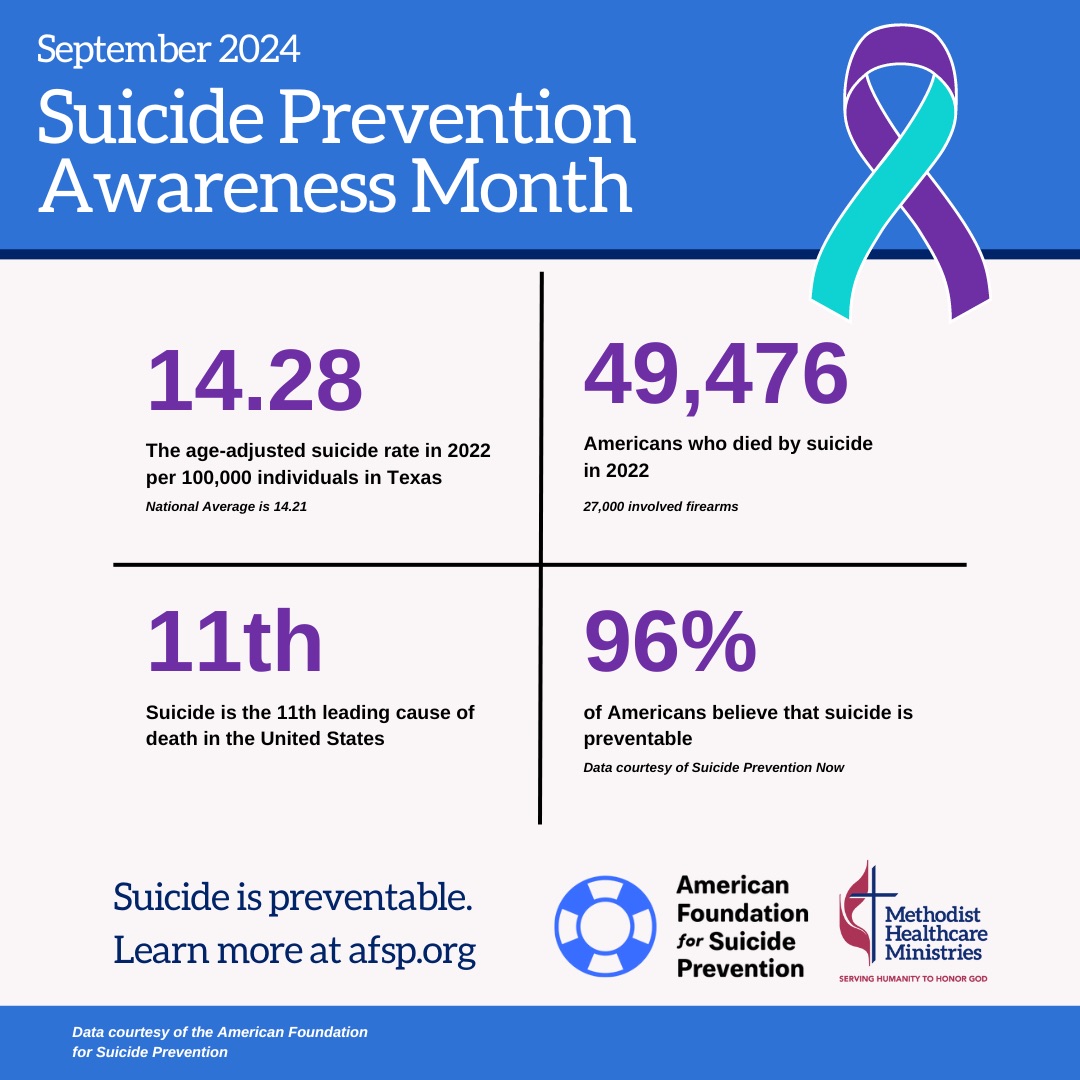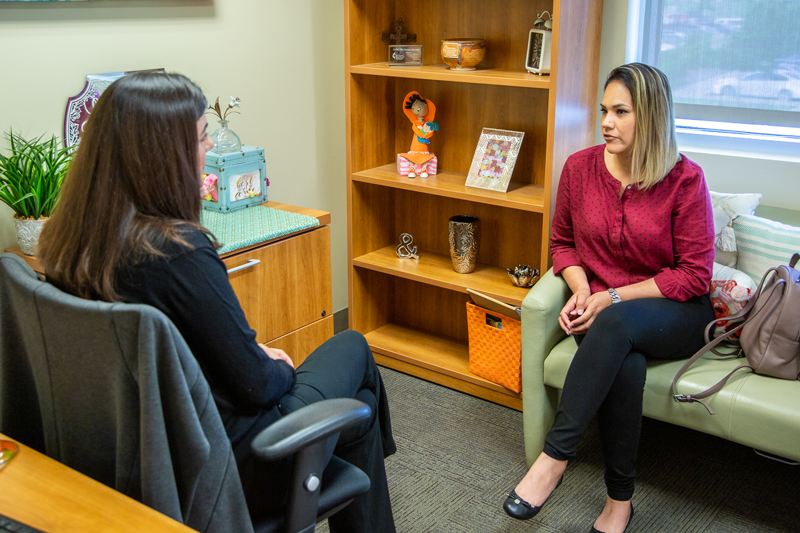Invisible Wounds: Suicide Prevention Month

Some wounds are invisible. Those are the words used to best describe the struggle of the 49,476 people who died by suicide in 2022. Each of those individuals were precious to their families and friends and sadly the loss of those loved ones often creates a ripple effect of trauma and sorrow in the space those lives used to fill.
According to the Centers for Disease Control and Prevention (CDC), suicide remains to be a silent killer in the U.S. In 2022 there were over 12.3 million people who seriously considered an attempt. The rise in self-harm related deaths and attempts goes back over 20 years with a 36 percent increase in suicide-related deaths in the U.S. since 2001.
“It’s a dark subject that individuals don’t want to talk about,” said Celina Gonzalez, a supervisor in Methodist Healthcare Ministries’ Behavioral Health Services. “How do you talk to somebody who has experienced attempts or how do you talk to somebody who has had a family member die by suicide attempt?”
Methodist Healthcare Ministries (MHM) approaches suicide prevention in its clinical and community care settings through an integrated care model that ensures individuals seeking help are supported in all aspects of their health – physically, mentally, and spiritually.

This means recognizing that regardless of the reason for a visit, our medical and dental care providers are also asking patients questions that gauge the need for a referral to our behavioral health team to follow up and provide mental health treatment.
“We approach it very carefully, very kindly, and very authentically,” Gonzalez said. “We create a safe space where someone can just unload what it is they’re experiencing.”
Our clinical team members use the Patient Health Questionnaire (PHQ-9), a self-administered test provided in primary care settings to determine if patients might need mental health services. The completion of this questionnaire alerts our providers to any needs a patient or client may have outside of their scheduled appointment, which could range from medical, dental or behavioral health. A key element of this integrated care approach is MHM’s Behavioral Health team responding to any emergency room (ER) report notifying them when a MHM patient and registered client has been brought to an ER for mental health reasons. At this point, the behavioral health counselors’ step in and work with the or patient to create a safe space where they can discuss their situation.
“Every year, we work with our families to complete a PHQ-9,” Andrea Aguirre, Parenting Program In-Home Specialist, said. “We do this to ensure that all our families get the necessary and lifesaving assistance they need.”
Awareness and prevention are key factors for preventing someone who is experiencing suicidal ideation from becoming another tragedy. Being able to spot the signs that someone may be experiencing suicidal ideation and supporting that individual by connecting them to resources and providing a safe place to share their struggle is an important aspect of preventing suicide. Here are some signs to look out for:
- Withdrawing from family and friends and self-isolating
- Talking about feeling trapped in unbearable pain
- Acting anxious and aggressive
- Talking about being a burden to others
- Sleeping too much or too little
- Increased use of drugs and alcohol.
Suicide Prevention Month is an internationally recognized observance established in 2003 to address the growing number of suicide-related deaths and to impart the singular message that suicide can be prevented. Additionally, suicide remains to be a leading cause of death in the United States for individuals aged 10 to 65 with death rates growing rapidly for young and economically disadvantaged individuals who may not have access to critical mental health services.
If you, or someone you know, is struggling with depression or thoughts of suicide call the 988 Suicide and Crisis Lifeline for free help from mental health professionals.
For more information on our services and how to get access to care, click here to learn more.
